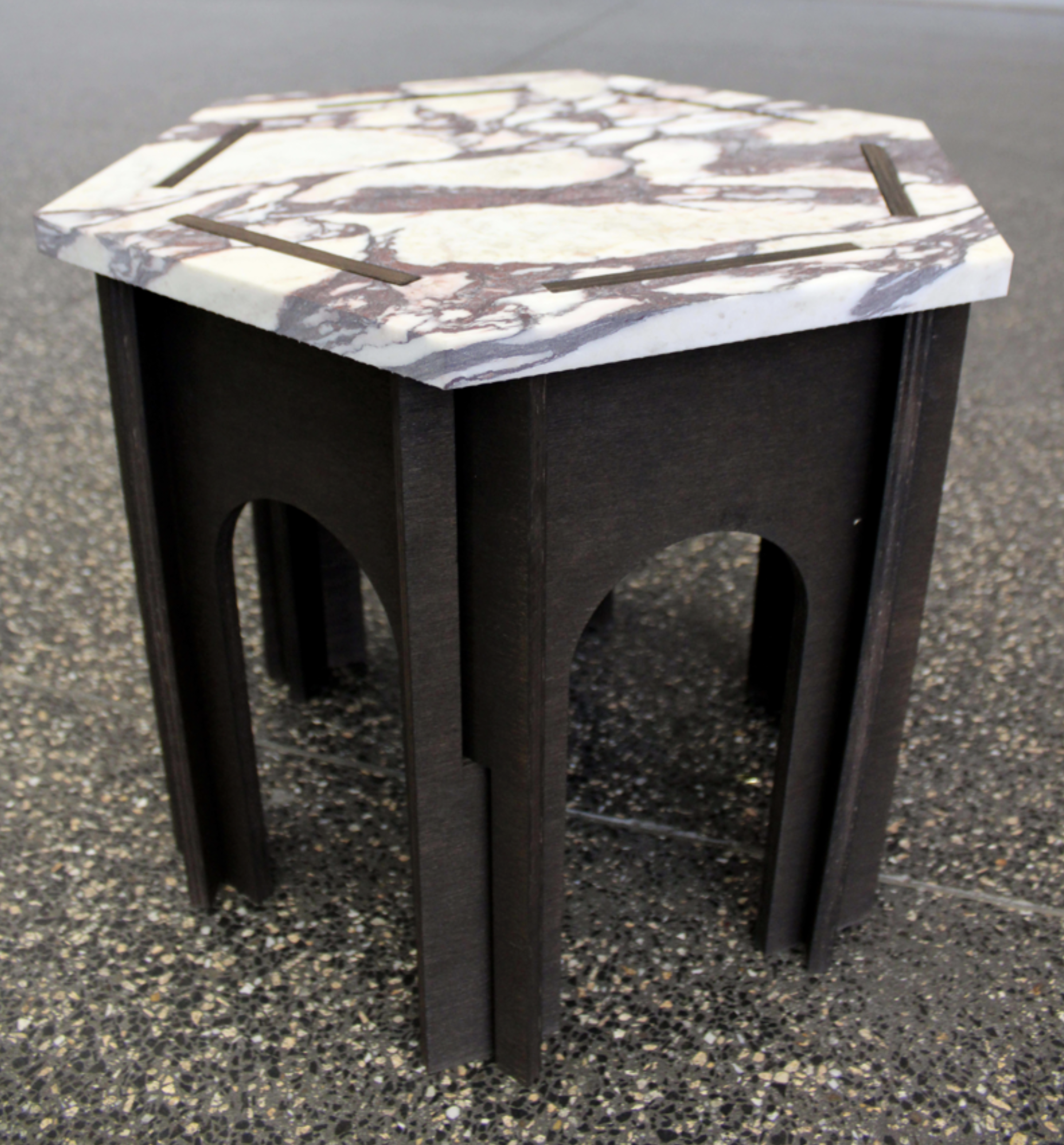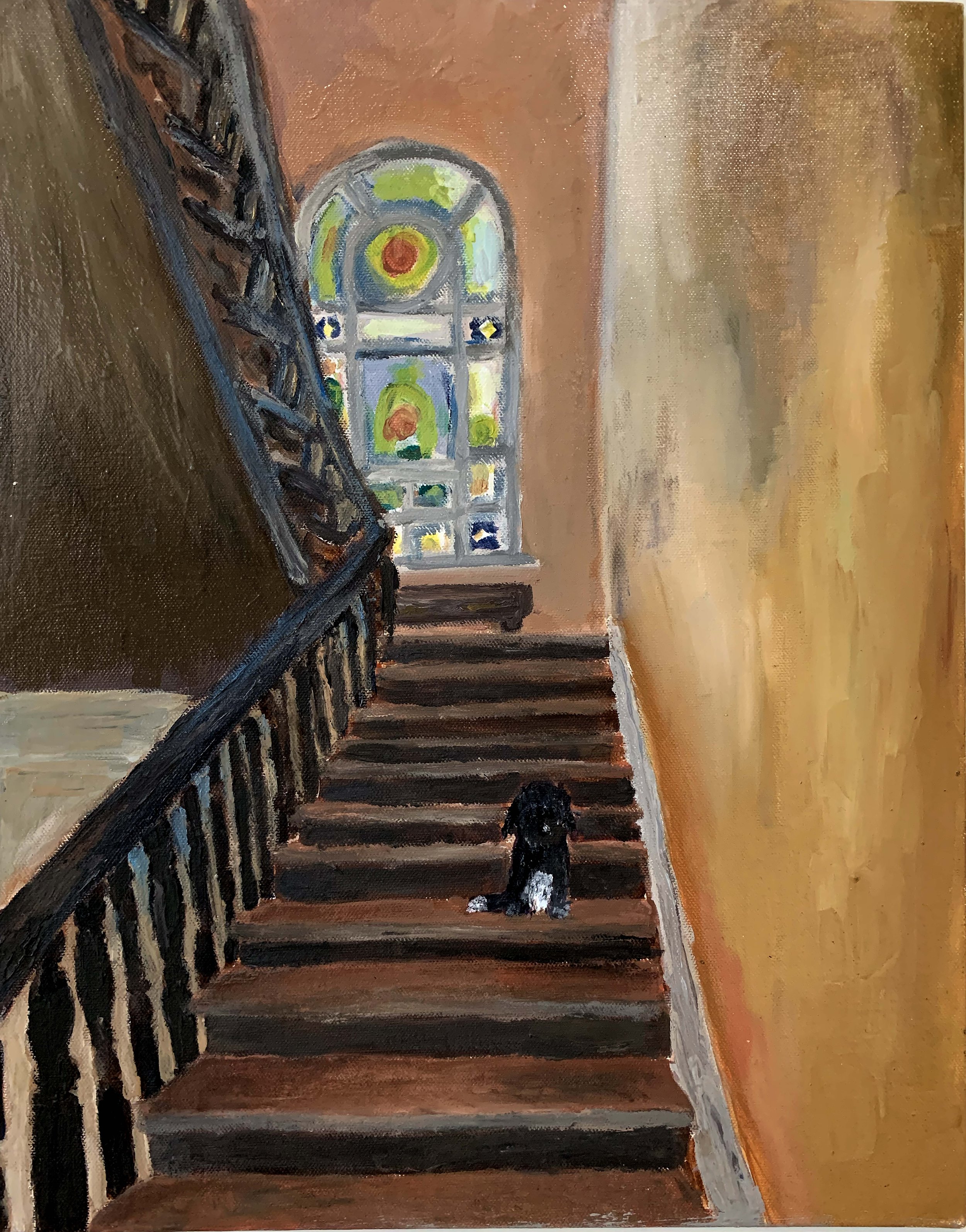IB VISUAL ARTS 2022
Giselle De FAzio
My exhibition aims to visualise the concept of “Memories and melancholy,” by presenting a series of works that encapsulate a fragmented and emotive snapshot of a single and personal, and nostalgic part of my and my house’s life and history. Each work reflects on the briefness of the human experience, and how time seems to be relative upon reflection; hence the use of quite old methods and artforms to convey past events. I hope that the audience is able to feel almost haunted and cold in the hopes to emulate the melancholy of looking upon a past memory. Inspired by my 19th century villa’s grandeur and haunting appearance and as a result being confined within it during COVID lockdowns, my artworks aim to encompass the same ghostly tone that inspired past gothic artists and writers, who were prolific at the time my house was built. My exhibition is consistently monotone, otherwise contains very dull, musty colours to encompass a sense of intimacy and constriction, similar to the feeling of being in an old house, emphasising themes of memories and melancholy. The impact is intended to evoke a subtle feeling of discomfort and nostalgia as the viewer is invited to observe from the central, cold stool, surrounded by the coldness of the structural motifs and monotone, gothic style of the drawings, paintings, and photographs. The viewer on the stool should feel surrounded by the works, creating a feeling of intimacy, but also emptiness. The colourful paintings draw the viewers eye from the left, where there is a feeling of intimacy, to the right where the colder works are more distant and dispersed from the viewing point at the chair. Strongly inspired by the architectural forms of Antoni Gaudi, my ink drawings draw in various structural elements, while also using organic shapes to convey a more decorative and less clear image to further the themes of both memories, yet also to reflect the gothic style of my house. All artworks incorporate isolated parts of my house, my family, or a metaphorical manifestation of an emotion. The most notable structural element from my house, used consistently within all artworks is the use of arches, which act as a frame, similar to old, gothic works are framed to appear decorative. The lack of real frames on the artworks aim to give the appearance of destruction and fragmentation; to reinforce a haunting tone that is carried throughout the works. Furthermore, the consistent use of figures conveys emotions, either of joy, or empty despair for lives passed. The joyful emotions also give a feeling of melancholy to suggest that these emotions only once were and are no-longer present; the use of black and white suggests these events are from hundreds of years ago. To express my concepts of memories and melancholy, many of my artworks replicate analogue photographic and vintage techniques. Like an old photo, my prints can be replicated in black and white, yet always vary in the outcome, suggesting the malleability and the easily manipulated nature of memories, from when they were created. This is especially evident in the pinhole and Polaroid photographs. Likewise, the dry point etchings can be printed many times, yet are always going to appear differently when printed; if the plate is edited, it can never go back to its original form, like a memory held dear to someone. The use of ink creates blurry and blotchy lines, to suggest the lack of clarity there is with memories, and the clearest thing is the part of the memory you are most emotionally responsive to. These old methods of artwork creation contrast heavily to the new methods I used to create the stool; using mathematical equations, digital software Blendr, and heavy machinery to create it. This marble and wooden sculpture contains a mechanical coldness that the other works don't have due to their handmade and loose nature. The stool also aims to act as an artwork of the present; it will be a new memory that will stand in the physical world; a new addition to my house that will outlive my generation.

Gallery Stool
Wood and Marble Sculpture
40cm x 42.5cm
Inspired by the geometric tile patterns in my house and Antoni Gaudi’s architectural use of curvature, the cold materials and uncomfortable nature of the stool acts as a contrast to the warmth and intimacy of the rest of the exhibition. The sharp form created using Blender; a 3D computer program, draws on the soulless and cold nature of the room. The stool’s central location is deliberate as it acts as a focal point, and the position viewers can perceive my exhibition

Fragments
Pinhole photographs, polaroid photographs and film
52 x 55cm
Based on learning old, long exposure photography techniques, I wanted to create the feeling of gathering many points in time to create a single memory. These photos are taken of particular areas of my house and are pieced together in a specific order to try and reconstruct the layout. Like memories, these pieces of my house are fragmented based on the things that have the most importance to me personally.

Window in time
Ink on paper
90 x 111cm
Inspired by Joy Hester’s ink drawings, this drawing depicts myself with my friends in childhood; faces pressed against the window. The cheeky expression contrasts the foreboding composition. The viewer becomes part of the piece as they view from above, though the children are unaware of the surrounding past memories, shown through various surrounding ink drawings. This memory will fade and become lost in the past, as it would have if it was not for this reference. The window acts as a visual motif to suggest that this moment is only a single window in time.

Joy and Despair
Series of Zinc Dry-point Intaglio Prints on Paper.
Image size – 5 prints at 13 x 13cm
27 x 89.5cm
Inspired by Joy Hester, my prints aim to reflect both her art style and life. Like the figure and zinc, the more marks that are added to the blank slate, the more it changes the environment and person. As time passes, they become more permanent and harder to erase. Joy’s life was destroyed by those around her Each print is differentiated with the addition of more figures, slowly turning her from a blank slate, to leaching off her. The influence of these individuals indicates how each memory and person in one’s life, impacts their mind, Changing memories.

Family Portraits
Series of Zinc Dry-point Intaglio Prints on Paper
Diptych Part A - 13 x 10cm
Diptych Part B - 25 x 20cm
Based on historical photos of the original owners of my house, and using Goya’s print making style, I was inspired to capture a more emotive depiction of the previous owners in the small diptych print. Old photos notably depict serious figures; this I altered, yet still created a grainy texture on the edges to emulate wear to suggest age. The second larger print is made of different panels to emulate the reconstruction of fragmented photos, contrasting different points of time, each panel based on a different photo. The figures and architectural features emphasise the melancholic tone.

The Front Fountain
Acrylic on Canvas Board
40 x 50 cm
Based on a photograph of the fountain at the front of my house, the painting transforms the environment to look almost dystopian. The fountain aims to be a contrast to the rest of the works, the decorative and futile nature of a fountain is contrasted to the true environment of Australia, parched and dry. The stylistic, wobbly nature of the fountain aims to replicate waves of heat, furthering a feeling of dryness. The depressing and somewhat surrealistic painting aim to replicate feelings of abandonment that comes with feelings of melancholy.

The Wooden Staircase
Oil paint on Canvas Board
50 x 40cm
The oil painting depicts my dog on the 134-year-old staircase in my house. Oil paint is historically used for decorative portraits, which I have used to capture the elaborate nature of the stairs, as well as the warn texture of them. The little dog contrasts the stable and long-standing nature of the stairs. Stairs evoke movement; each step is a way of passage. However, they stand still; this contrasts to the time passing as different people live in the house, creating feelings of ageing memories.

Mine
Ink on Paper
70 x 50cm
This self-portrait, inspired by old portrait paintings aims to capture a slightly manipulated image of myself. Like a memory, portraits shape and manipulate each of our perspectives on how we perceive a particular subject matter. The forthcoming stance and the strong contrast suggest confidence and triumph, which is not necessarily the whole truth of my life. Likewise, the film camera empathises my love of media, technology, and art, yet also hides other elements of my life. However, this is how I would like people to remember and see me.

My Sister’s
Ink on Paper
70 x 50cm
This drawing of my sister aims contrast the derelict building to her clean fashion choices. The building she finds herself was built at the same time of my house, yet it is in far worse condition. In order to nurture a memory, one must keep its relevance in modern times opposed to leaving memories of old styles to wither into the past. While it is an unconventional background for a portrait, the focus on my sister’s lighter colours shows the reignition of this memory that could have been easily forgotten, since so find it easier to knock a building down and start again.

My Mother’s
Ink on Paper
69 x 49cm
Influenced by Renaissance portraits and figures, this portrait of my mother, aims to be reminiscent of her love of Renaissance art and art in general. This picture of her is in her favourite gallery Heide and has her sitting in a Modern style chair (which looks quite uncomfortable) and contrasts the Renaissance like expression; carefree, satisfied, and relaxed. Like old portraits, this one aim to recollect all memories and attributes that she would like to be remembered by.

